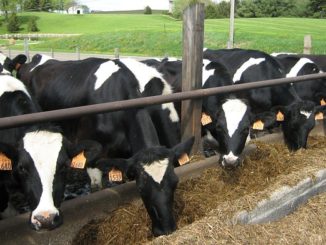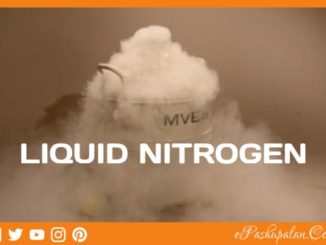Major Reproductive Problems in Dairy Animals
Repeat Breeding
When a cow has failed to conceive after three or more services, has a typical estrus cycle length, no abnormalities in the vaginal discharge, no palpable abnormalities in the reproductive tract, has calved at least once before, and is less than ten years old, it is classified as a repeat breeder. Repeat breeding is one of the most serious infertility issues that field veterinarians face. The cows seem to be fine, and the cause is difficult to determine.
Anoestrus
The cow is not observed in oestrus either because she has not come into oestrus (not cycling) or because oestrus was not detected (cycling).
True anoestrus: The cow does not come into oestrus because she has inactive ovaries.
Suboestrus (silent heat): The cow has normal cyclic activity, but is not observed in oestrus due to weak or absent oestrous behaviour, or insufficient observation.
If oestrus has not been observed in a dairy cow by 60 days post-partum the condition is defined as Post-Partum Anoestrus (PPA), whether she is cycling or not.
Delayed ovulation
Ovulation and oestrus must be coordinated in order for a cow to become pregnant by artificial insemination. If ovulation is delayed, the sperm’s ability to fertilise the egg may have degraded to dangerously low levels. Furthermore, the egg may be old and unable to be fertilised. Delayed ovulation is often blamed for repeat breeders, cows that cycle continuously but do not conceive.
Metritis
Inflammation of uterus
Pyometra
Accumulation of pus inside uterus
Introduction to Few Biotechniques in Animal Production
Farm animal cloning
Clone is a genetic material of an organism or animal similar to the parent of its genome. The term cloning is used to create identical or genetically related species or animals.
There are two ways to do it. First, the embryo is divided early (pluripotent) to produce identical twins. In the beginning, division into embryos became important but subsequently lost track because it is technically complicated and less effective, because a single ovum can only produce two identical individuals. Somatic cell nuclear transmission is the second process. When the first cow, Dolly, was cloned (at the Roslin Institute in the United Kingdom) in 1997, the technique received a lot of attention, and it was presented as a cost-effective tool for farm animal production. The nucleus of a somatic cell is moved into the enucleated cytoplasm of an oocyte using this method. The ovum is transferred to the womb of a surrogate mother after the nucleus is transferred to the enucleated ovum to activate the embryo to begin dividing. In order to monitor the exposition of a specific protein of interest or alter those host processes, the organisms/ animals produced by this technology bear a recombinant gene, which is introduced artificially to the host original genome.
In 1999, NDRI Karnal created the first clones of buffalo in the world, which was called Garima. (IVF Calf First World – Pratham 1990, NDRI Karnal).
Merits
- It provides advantages for clinical and medical trials.
- It deals with the issue of extinction of endangered species.
- The supply of meat and dairy to be consumed may be increased.
- It could assist in the manufacture of medicinal proteins and medications.
- Can support the study of stem cells.
Demerits
- By taking God’s position, it goes against the usual course of nature.
- It is tedious and very costly.
- Could lead to suffering for animals.
- The consumption of cloned animal meat may affect human health.
Transgenic animals
A transgenic animal bears an alien gene that has voluntarily been incorporated in its genome. The alien gene is developed using the DNA recombinant. In fact, the two methods used in the production of transgenic animals are: (1) the transformation by the desired DNA of embryonic stem cells (ES cells) into the pregnancy of the fertilised egg. Desirable genes are passed from one species to other animals or species to enhance livestock production. Higher rates of development, leaner growth trends, increased disease resistance, increased output of milk, more successful metabolism and antimicrobial gene transfer to farm animals are some of the goals of transgenic.
Semen Sexing (Sexing of spermatozoa)
Sex Semen Technology is used to make males or females offspring of the desired sex. The X sperm has more DNA compared to the Y sperm. Thus, it is possible to differentiate between X- and Y-sperm by measuring the DNA contents of individual sperm. Several methods were tried and several were stated to be effective for sexualization. Sperm selection using flow cytometry has therefore been the only way of washing the semen which has shown some promise. The sperm are first labelled with fluorescent colouring and then X and Y sperm with a special instrument called a flow cytometer can be distinguished. Though sorted sperm is usually tiny, in vivo deep intrauterine insemination has obtained reasonable pregnancy rates. Semen sexing may also be applied to enhance parent testing, improve male breeding and eliminate, as well as the protection of rare and superior species, the occurrence of sexually related diseases. The low number of sexed sperm produced per unit of time is the principal disadvantage of this procedure, with sex sperm presenting a wide range of damage, e.g., sperm membrane destabilisation and capacitation-like changes that decrease the lifetime of sorted sperm in the sex tract.






Be the first to comment